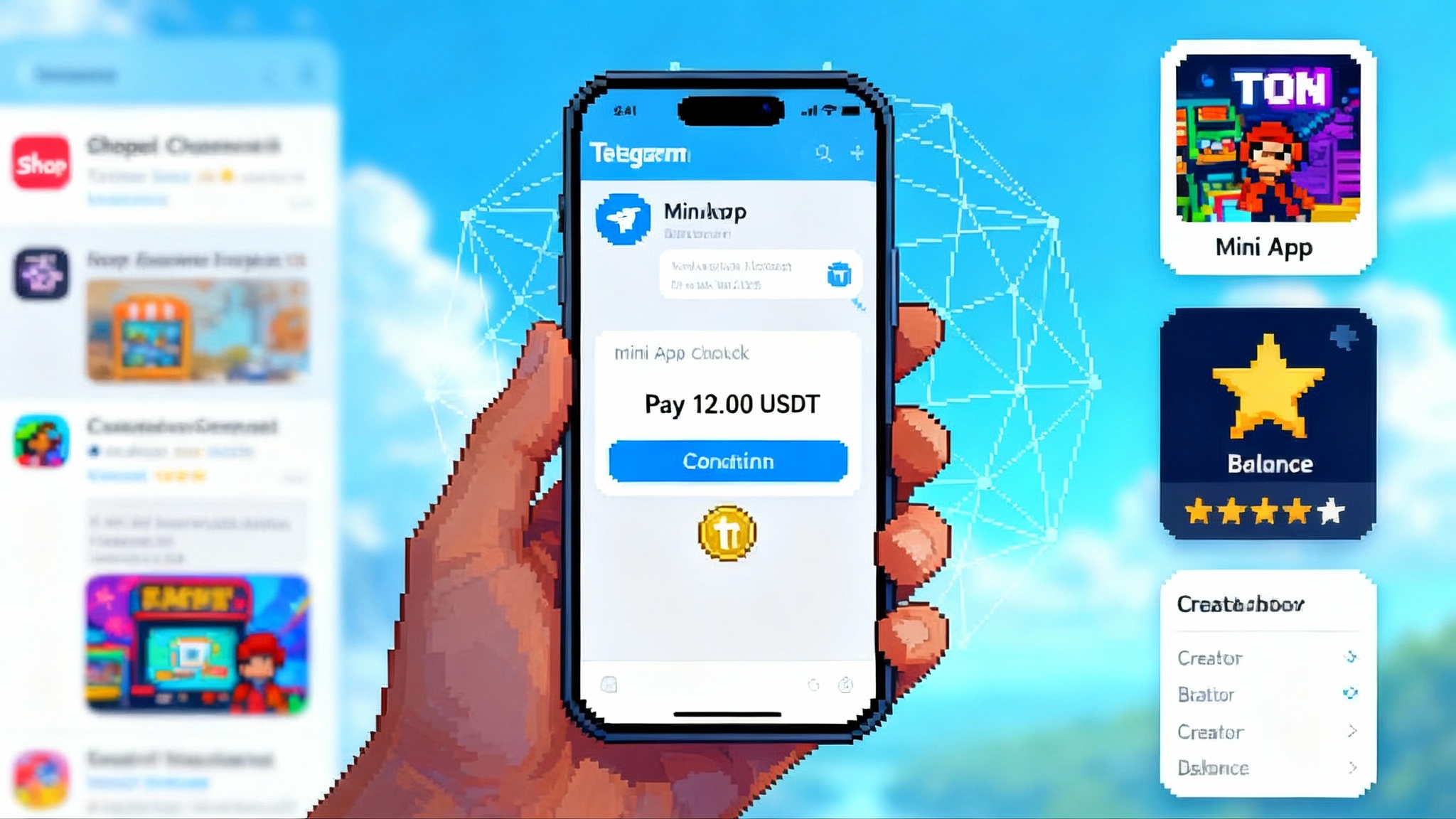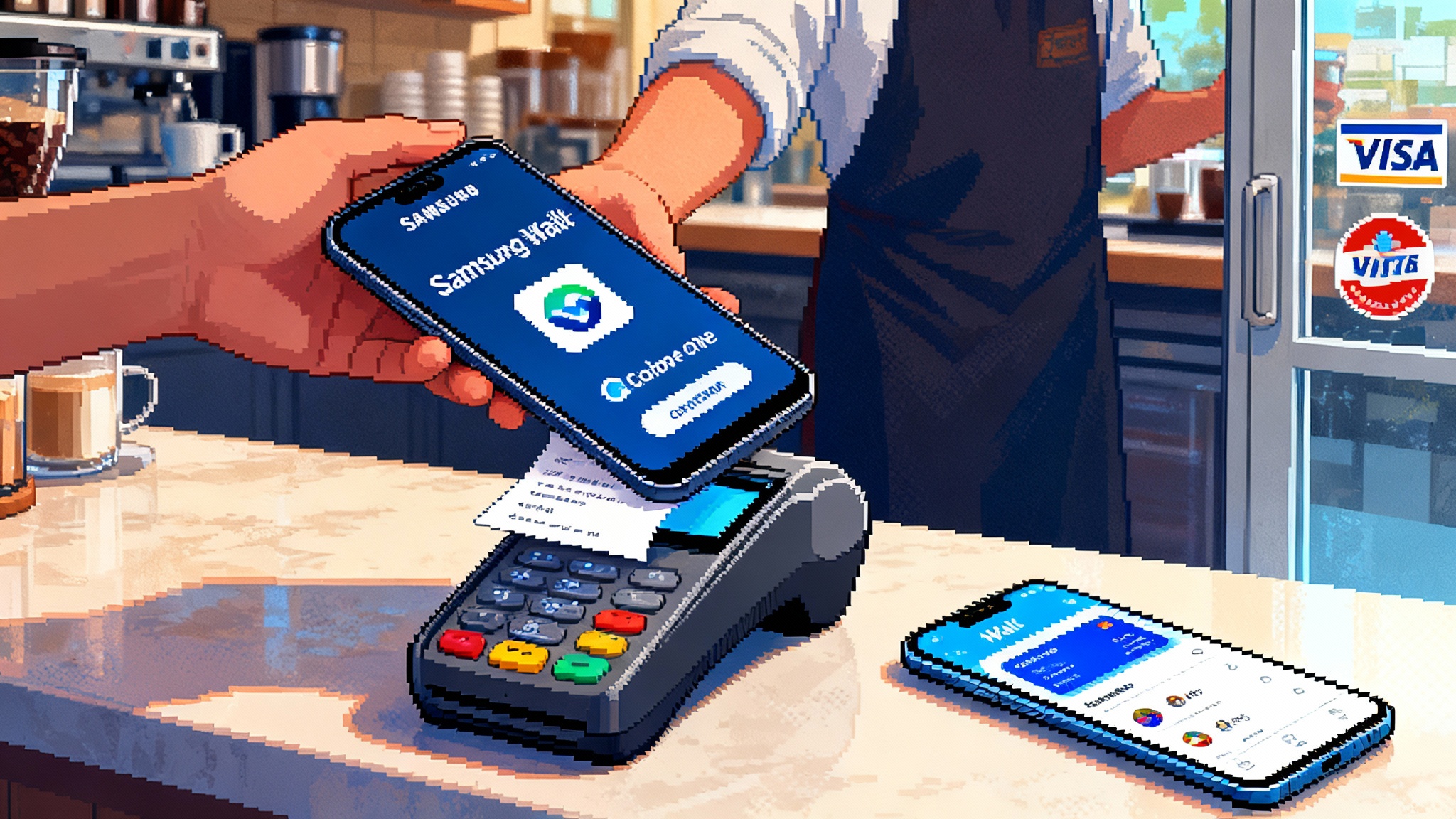Telegram goes all in on TON for mini apps and payments
Telegram is standardizing on TON for all Mini Apps, bringing checkout into chat and unifying wallet auth with TON Connect. Here is how USDT, Stars, and Toncoin turn Telegram into a complete commerce stack and how builders can capture the opportunity.

The news: Telegram picks a single chain and the checkout moves into chat
On January 21, 2025, the TON Foundation announced that TON is now the exclusive blockchain for Telegram’s Mini Apps. Developers who use any on-chain feature inside Telegram must integrate TON Connect for wallet authorization, and Toncoin remains the only crypto that Telegram accepts for platform payouts such as Stars and Ads. The change gives Telegram one settlement layer and one integration standard across its entire app surface, from shopping bots to games to channel monetization. TON’s announcement of the exclusive partnership is the clearest signal yet that messaging super-apps are becoming crypto’s biggest onramp.
Why it matters
Payments and commerce no longer need to leave the chat. The old flow sent users into external wallets or exchange apps. The new flow lets a customer browse, buy, and receive a receipt without breaking conversation context. That is the super-app trick. WeChat proved the pattern in China. Telegram is attempting the same with stablecoins and an open blockchain as the engine, a direction that echoes broader moves toward a shared yen stablecoin rail.
The hook: USDT rides the rail that users already have open
Tether’s dollar token arrived on TON in April 2024 and adoption has been quick. Within two months, USDT on TON passed 500 million outstanding, according to The Block’s dashboard, and continued to climb as mini-app activity grew. The lesson is simple: people will use stablecoins where they already spend their time. Pushing USDT into chat reduces the steps between discovery and payment. See The Block’s early milestone on the TON tally: USDT supply on TON crossed 500 million.
What changes in practice
- Person to person: sending 20 digital dollars to a friend can feel like sending a sticker. The recipient sees funds inside the Wallet mini app and can spend them again without exiting Telegram.
- Mini-app checkout: a store bot lists items, a user taps Buy, the wallet prompt appears, and settlement is on-chain. No account creation, no browser pop-ups, no fragile redirects.
- Creator payouts and ads: channels and bots monetize via Telegram Stars, which creators can convert to Toncoin and withdraw. Ads are purchased and revenue is shared in Toncoin, closing the loop between attention and settlement.
The upshot: in chat stablecoin payments turn Telegram from a discovery channel into a complete commerce stack.
The developer playbook: how to build for Telegram x TON
You can think of the Telegram stack as three layers: connect, distribute, and pay.
1) Connect: authentication and wallet permissions
- Use TON Connect as your single sign-on for blockchain actions. It authorizes signatures and asset permissions across custodial or self-custodial wallets that users bring into Telegram. The benefit is consistency. Users see the same approve screen everywhere, while you get a standard interface for requesting capabilities.
- Map user states. Treat users as Guest, Lite, and Pro:
- Guest: browsing within a mini app; you store a server session and show items but do not request signatures.
- Lite: user connects a wallet via TON Connect; you can read balances and quote prices.
- Pro: user approves spending permissions; you execute swaps, subscriptions, or payouts.
2) Distribute: ship your app where users already are
- Channels and chats as your App Store. Post a message with a deep link that opens your mini app directly in the conversation. Pin it to the channel header so new followers always see your entry point.
- Use referral codes. Mini apps can generate referral links that fill a cart or preselect a subscription plan. It turns content into shoppable posts.
- Boosts and paid distribution. Run Telegram Ads to target specific geographies and interest clusters tied to channels. If your revenue is in Stars, reinvest a share into ads to fuel a measurable loop: view → open mini app → pay → reinvest.
3) Pay: build with two rails and a bridge
- Rail A: USDT on TON for dollar pricing. Quote and settle in USDT to eliminate volatility. This is the right default for subscriptions, tipping, and small in chat purchases.
- Rail B: Toncoin for platform-native flows. Telegram Ads and Stars withdrawals use Toncoin, and many DeFi rewards and game economies do too. Keep some working Toncoin on hand to cover network fees and platform-specific purchases.
- The bridge: Stars. Buyers can use Stars through Apple and Google in-app purchases for digital goods. Developers and creators convert earned Stars to Toncoin on Fragment and then to USDT if they want to hold dollars. Stars give you global card acceptance without managing card processing yourself, while Toncoin and USDT give you crypto-native settlement and liquidity.
Implementation checklist
- Start with a basic catalog or game loop inside a Mini App that opens from a channel post.
- Add TON Connect and request read-only permissions first. Show the user their balance and a one-tap path to enable spending later.
- Quote prices in USDT with a Toncoin fallback. Explain choices in plain language at checkout.
- Offer one free action for every new user who connects a wallet. Free tastes convert.
- Split your revenue: recycle a percentage into Telegram Ads, allocate some to creator collabs in other channels, and keep a buffer for customer support refunds paid in USDT. For routing and slippage controls, study how Uniswap v4 hooks as liquidity OS influence on-chain execution design.
What this unlocks: everyday use cases that do not feel like crypto
- Micro-commerce in emerging markets: a channel selling prepaid data, gift cards, or game credits can price in USDT and deliver instantly inside chat.
- Cross-border creator economies: a musician posts paid content unlocked with Stars; at month end they convert Stars to Toncoin and then to USDT to pay collaborators.
- Games that cash out: mini-games pay out small USDT or Toncoin amounts for milestones, which players can spend on boosts or withdraw without leaving Telegram.
- Group utilities: shared subscriptions, community fundraisers, and peer reimbursements live in the same chat where coordination happens.
Mechanism behind the scenes
A wallet prompt replaces a web checkout. The user’s authentication context is already established by Telegram. TON Connect standardizes the blockchain part. The combination cuts two or three steps from a normal crypto flow and four or five steps from a card-based web checkout. Fewer steps mean more completed payments.
Risks and fault lines to watch
Policy friction
- App store rules: Stars let buyers use Apple Pay or Google Pay for digital goods. That is useful, but rules can shift. Developers should keep a non-mobile checkout option ready for large purchases or business customers to avoid sudden disruption.
- Jurisdictional risk: stablecoins face evolving rules. Stay current on local limits for stablecoin use and provide clear terms and help-center copy inside your mini app.
Fraud and safety
- Telegram is a powerful distribution channel, which attracts fraudsters. Bake in trust cues: verified channel badges, obvious refund policies in chat, and the minimum viable KYC for high-value withdrawals.
- Abuse surfaces: task scams and fake escrow groups live outside official flows. In your onboarding, teach users simple rules of thumb. For example, never complete payments in side-chats started by strangers, and only confirm transactions through your mini app’s own prompts.
Platform lock-in
- Exclusive means speed, but also dependency. If your entire business runs inside Telegram, have a browser build that uses the same TON Connect flow. If Telegram throttles a feature or a region, you can still serve customers.
Operational hazards
- Stablecoin liquidity: quote slippage can occur on thin pairs. Integrate a reputable router and set conservative max slippage for swaps, especially when converting Stars proceeds to USDT.
- Support load: in chat commerce collapses the funnel into a single surface, so your support also lives there. Staff a visible support handle and add automated receipts with transaction IDs.
KPIs to track from now through 2026
Adoption
- Daily active users of on-chain features: count unique users who complete a TON Connect action, sign a transaction, or receive an on-chain payout in a 24-hour window. Break out first-time and repeat actors.
- Mini-app open to purchase rate: for posts that open your mini app from a channel, track the share of opens that reach the wallet prompt and the share that complete payment.
Money in motion
- USDT supply on TON: the macro indicator for dollar demand in the ecosystem. Use it as the backdrop for your own growth goals and liquidity planning.
- Merchant integrations: number of mini apps that accept USDT or Toncoin and have at least 100 monthly payers. Watch both the count and the median monthly payers per merchant.
- Ads to revenue ratio: if you reinvest revenue in Telegram Ads, watch the dollars of net revenue per dollar of ad spend over 30 and 90 days.
Reliability and trust
- Payment success rate: successful settlements over initiated payments. Segment by rail: USDT versus Toncoin versus Stars. Investigate any region or device pattern in failures.
- Refund time and dispute rate: median minutes to process a refund and the share of orders touched by support. Fast refunds increase repeat purchase rates in chat.
Developer velocity
- Time to first transaction: average minutes from a new user’s first open to their first on-chain action. Aggressive goal: under five minutes.
- Version cadence: number of meaningful releases to your mini app in a quarter. Telegram ships new surfaces rapidly; stay current to unlock new distribution and monetization slots.
A plain-language guide for the next 90 days
- Ship a minimal commerce loop with USDT checkout and TON Connect. Make it work beautifully for one region and one product.
- Publish in a channel and buy a small ad test targeting lookalike channel audiences. Measure cost per first purchase and cost per repeat purchase.
- Add Stars for iOS users who prefer card payments and document the conversion path from Stars to Toncoin to USDT for creators. Keep your help copy visible in chat.
- Instrument the full funnel inside Telegram: post view, mini-app open, wallet connect, payment prompt, settlement, receipt sent, refund if needed. Your analytics should match a normal ecommerce stack, just inside chat.
- Run one partnership with a complementary channel. Cross-post a bundle offer that opens both of your mini apps with prefilled carts.
What this means for the industry
The industry spent a decade trying to drag people to crypto apps. Telegram is pulling crypto to where people already talk, watch, and buy. The exclusivity decision gives developers fewer choices, but it removes indecision and fragmentation. One chain, one wallet connect protocol, and one set of payout rules is how you get scale inside a consumer app that already has hundreds of millions of people. As mainstream platforms follow a similar arc, expect more examples like Galaxy Wallet goes crypto native.
The bet is that stable dollar payments plus a familiar chat interface will do for crypto what card on file did for mobile commerce. If you are building, the opportunity is not to copy web checkouts. It is to treat conversation as the interface. Keep your store in the thread, and keep settlement one tap from a message.
The next 12 months will tell us if messaging super-apps truly become the biggest onramp. The signs to watch are simple: more people tapping a wallet button in chat, more USDT circulating on TON, and more mini apps turning views into purchases without sending anyone away. If those keep rising, the new default way to pay online may start with a ping from a friend.








